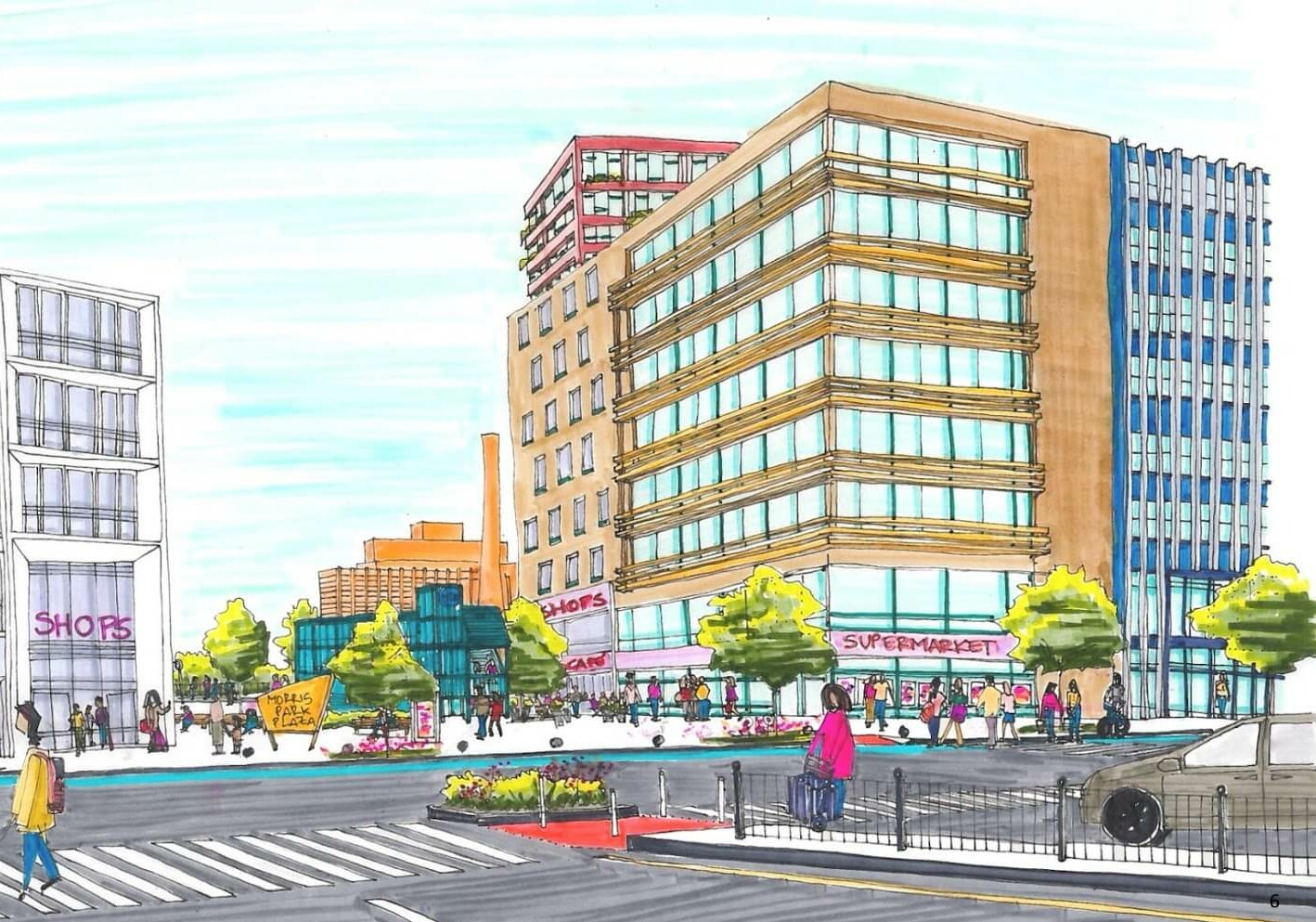In the Bronx, residents of Co-op City, Parkchester, Morris Park, and Hunts Point will soon enjoy new Metro-North Stations; with strings attached. The four new commuter hubs are thanks to a rezoning approval by New York City Council on August 15. These stations will anchor a new 6-mile development corridor where 7,000 new homes will be built across 46 city blocks.
The long-dreamt Co-op City Station will cut down commute times between the Mitchell-Lama complex where over 40,000 people live and the rest of New York City. Today, express bus service connects Co-op City residents to Midtown Manhattan in 1 hour, and the new train stop will cut that commute down to 27 minutes.
Parkchester, an equally large development built in the 1930s by the Metropolitan Life Insurance Company, will have a 20-minute commute to Midtown. The new access will also connect Bronxites to Stamford, and Connecticut more broadly.

Transportation always unlocks growth, but what kind of growth will rezoning deliver? The jury is split over whether or not rezoning will provide civic benefit, or if it will exacerbate inequality in New York’s poorest borough. While the Mayor’s Office and several Bronx City Council Members champion this latest approval, several community groups view it as a trojan horse for gentrification.
The Housing Divide
Of the 7,000 new units, the Mayor’s Office said 1,700 will be offered at below-market prices. The stations are slated for completion in 2027, and the development corridor will fill out in the coming decade. New York City Council has also pledged $500 million in capital investments to help improve parks, schools, streets, and infrastructure between Co-op City and Hunts Point.
“Confronting our city’s housing and affordability crisis requires creating more homes for New Yorkers,” said New York City Council Speaker Adrienne Adams. “This historic neighborhood rezoning, coupled with nearly $500 million for local infrastructure improvements that the Council secured, will have a lasting positive impact for the residents of the Bronx and our entire city.”

The upzoning approval on August 15 was shepherded by Bronx Councilmembers Amanda Farías, Rafael Salamanca, Kevin Riley, and Kristy Marmorato; Director of City Planning Dan Garodnick; and others. Community boards (CB) in the Bronx are divided over whether or not rezoning was a good idea: CB11 and CB9, which includes Parkchester, voted in support of rezoning; while CB10, which includes Co-op City, voted against it.
CB10 District Manager Matt Cruz voted no over “concerns about affordability, building height, and the lack of homeownership opportunities.” Cruz said he’d like to see shorter buildings (5–7 stories) and more co-ops and condominiums, as opposed to luxury rentals in high-rises. Representatives from CB9 and CB10 welcome the new train stations, but are equally concerned about gentrification. Local groups like Take Back the Bronx, Mothers on the Move, and People Power Movement fought hard against rezoning.

Many of the parcels along the 6-mile development corridor are occupied by light industrial buildings. Soon, they will have mid- and high-rise residential buildings bankrolled by Pinnacle, a realty that started buying up properties in Parkchester circa 2015 in anticipation of the rezoning, among other developers. The upzoning is part of Mayor Eric Adams’s City of Yes housing program, which hopes to deliver 500,000 new units in the next decade.
The new stretch of buildings will run parallel to the Hutchinson Parkway, a highway by Robert Moses completed in 1941 that divides the predominantly Black, AAPI, and Latinx neighborhoods of Parkchester and Morris Park to the west; and single-family neighborhoods of Schuylerville and Throggs Neck to the east that are almost 50 percent white.

In recent years, residents in Throggs Neck and Schuylerville have mobilized to stop the rezoning, forming coalitions like Bronx Coalition Against Up Zoning. That organization’s goal is to “preserve the existing beautiful suburban feel for families.” There’s also been significant pushback against the rezoning plan from the west side of Hutchinson Parkway, which is much more diverse, albeit for ulterior political reasons.
A Brief History of Rezoning in the Bronx
Resistance to rezoning started in 2015, the same year then Mayor Bill de Blasio first floated the idea. In 2017, anti-gentrification protesters marched down Southern Boulevard in Hunts Point against the proposal. It was around that time when the Regional Plan Association (RPA) estimated 71 percent of Bronx residents are at risk of displacement from gentrification. Similar demonstrations were held on Bruckner Boulevard, and Jerome Avenue to the west.

Planning workshops started in 2018 between Parkchester residents and the planning department to build consensus around rezoning. Michael Allen, a professor at West Virginia University, observed several of these workshops for his PhD. In interviews with Parkchester residents, Allen noted that New York City Department of Planning officials often “ignored” comments made by Parkchester residents in meetings over Zoom. “I already believe that as soon as that station comes, everything will change,” one Parkchester resident told Allen in 2023.
Today, groups like Take Back the Bronx and Save Section 9 (SS9) would rather see government subsidies go toward existing public housing stock over copious amounts of luxury real estate development. “We’ve seen similar plans before and they’ve never centered or benefitted Bronxites,” said Ramona Ferreyra, founder of SS9. “What’s ironic is that these same districts have seen an uptick in the privatization of NYCHA which leads to rent instability and a loss of tenant protections.”

